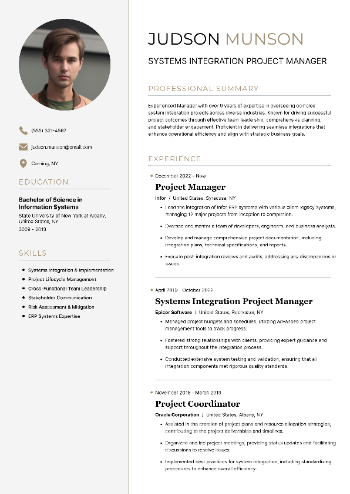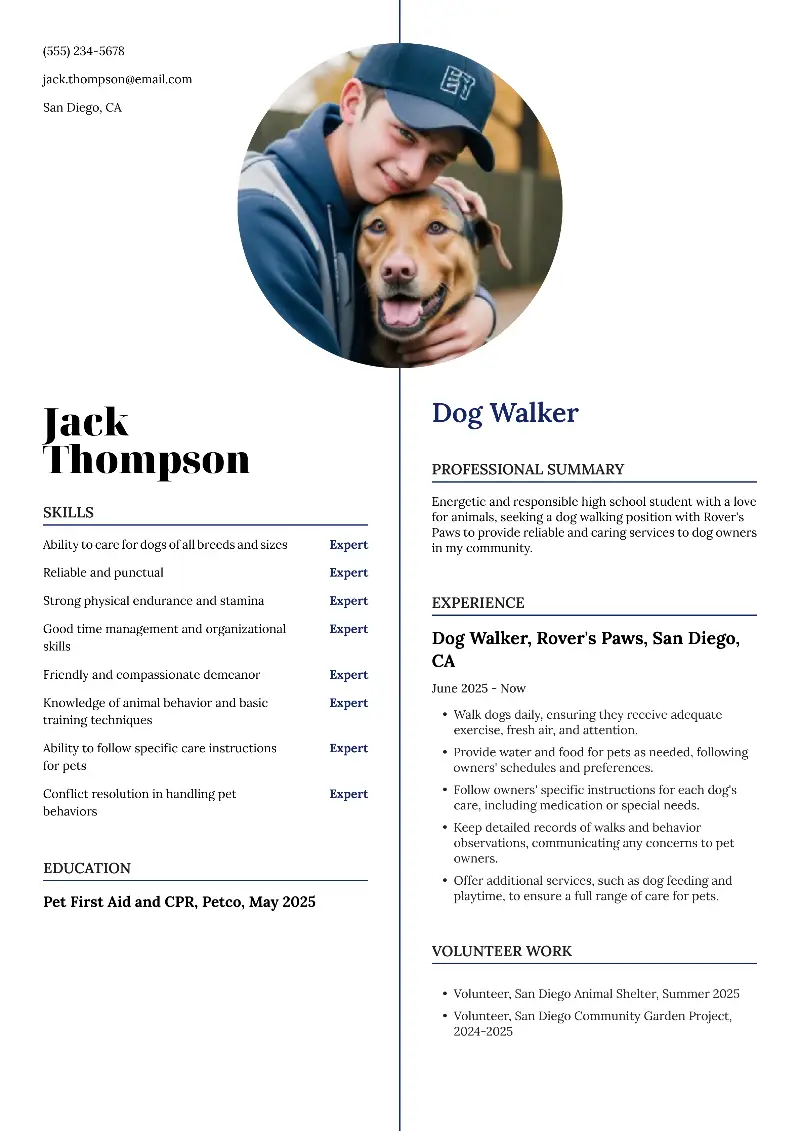In an era where time often feels like it's slipping through our fingers, effective time management has never been more vital.
Balancing multiple responsibilities, meeting deadlines, and achieving long term career goals all hinge on our ability to manage time efficiently. But what exactly does time productivity entail?
This article explores a range of time management skills examples that can transform the way you approach your daily tasks. By delving into these practical techniques, you'll gain valuable insights into prioritizing your workload, minimizing procrastination, and enhancing productivity.
What are time management skills?
Time management skills refer to a set of abilities that help individuals plan, organize, and prioritize their chores.
Key time management skills include:
1. Prioritization
It is the process of determining the order in which duties should be addressed based on their urgency. It involves evaluating projects to decide which ones need immediate attention versus those that can be tackled later.
Effective prioritization helps ensure that you focus your time and energy on things that will have the most significant impact on your work goals.
Prioritized daily tasks to ensure urgent client requests were addressed within 24 hours, improving response time by 30%.
2. Scheduling
Organizing and allocating time for activities in a structured manner. It involves creating a plan that outlines when and how tasks will be completed, ensuring that time is used effectively and that deadlines are met.
Scheduling helps improve productivity, manage workload, and balance various aspects of life.
Scheduled and coordinated meetings for a team of 15, optimizing calendar availability and reducing conflicts.
3. Goal Setting
Defining clear, actionable objectives that you want to achieve. It means identifying what you desire to accomplish, and setting a timeline for completion.
It helps provide direction, motivation, and a sense of purpose, enabling you to focus your efforts and measure progress.
Set clear monthly sales goals, leading the team to exceed targets by 20% each quarter.
4. Task Delegation
The process of assigning responsibilities to others in order to get desired more efficiently. It involves distributing work among team members or colleagues based on their skills, expertise, and workload.
Delegation can enhance productivity, foster team development, and ensure that projects are completed on time and to a high standard.
Delegated project responsibilities across cross-functional teams, increasing overall productivity by 25%.
5. Single- and Multitasking
Understanding when to focus on one undertaking at a time versus handling multiple tasks, based on what will yield the best results.
Efficiently managed single-task assignments while also juggling multiple projects simultaneously without missing deadlines.
6. Using Tools and Technology
Leveraging calendars, to-do lists, and project management software to stay on schedule. These tools help streamline tasks and keep track of deadlines by automating and simplifying different aspects of time management.
Utilized project management software like Asana and Microsoft Teams to streamline workflows and track progress in real time.
Best time management techniques
Effective use of time is crucial for achieving personal and professional goals. Here are some of the time management strategies to help you maximize productivity, stay organized, and make the most of your work:
| Technique | Description | Benefits |
|---|---|---|
| The Pomodoro Technique. | Work in 25-minute intervals followed by a 5 min break. After four intervals, take a longer break. | Maintains focus, reduces burnout, and structures work periods. |
| Time Blocking. | Allocate blocks of time to different tasks or activities throughout the day. | Provides structure, eliminates distractions, and frees up time for core chores. |
| The Eisenhower Matrix. | Categorize operations into: Urgent and Important, Important but Not Urgent, Urgent but Not Important, and Neither Urgent nor Important. | Focuses on what matters most. |
| The 2-Minute Rule. | Complete tasks that take less than two minutes immediately. | Decreases procrastination and accelerates small assignments. |
| SMART. | Set goals that are Specific, Measurable, Achievable, Relevant, and Time-bound. | Gives clear objectives and a structured plan. |
| The ABCDE Method. | Prioritize obligations as A (Must do), B (Should do), C (Nice to do), D (Delegate), and E (Eliminate). | Helps structure tasks and focus on what is most essential. |
| Task Batching. | Group similar duties together and complete them in one focused session. | Reduces context switching and increases efficiency. |
| The Time Audit. | Track how you spend your time to identify patterns and areas for improvement. | Offers insight into time usage and helps make adjustments. |
| The One-Minute Rule. | Finish tasks that can be done in a minute or less. | Prevents small projects from accumulating and keeps things organized. |
| Eat That Frog. | Tackle the most challenging or important endeavor first thing in the day. | Builds momentum and ensures critical tasks are addressed early. |
| Kanban System. | Use a visual board with columns like “To Do,” “In Progress,” and “Completed” to track chores. | Provides a visual overview of workflow. |
| Daily and Weekly Planning. | Spend time each day and week planning and prioritizing tasks. | Keeps you focused on achieving objectives. |
How to put time management skills on a resume?
Showcasing how to manage time on an application can significantly enhance your appeal to potential employers. Here’s how you can demonstrate these time productivity skills:
1. Craft a strong resume summary/objective
These statements should highlight time management as one of your core competencies, linking it to your professional achievements.
Example:
Detail-oriented Project Manager with 7+ years of experience overseeing complex projects. Proven ability to prioritize tasks, manage project schedules, and delegate effectively, ensuring timely project delivery and client satisfaction. Adept at risk management and workflow optimization to meet tight deadlines.
Tips:
- Use action verbs like prioritize, schedule, organize, and manage to emphasize your time management skills.
- Mention quantifiable achievements related to time management, like reducing project delays or improving team efficiency.
2. Demonstrate effective use of time in your experience section
Weave time management into your job descriptions by showing how you applied these valuable skills in your past roles and how they led to measurable results. Highlight tasks, responsibilities, or initiatives.
Example:
Project Manager | Glory Construction | Jan 2019 – Present
- Led cross-functional teams through the completion of 10+ projects annually, developing detailed timelines that reduced project delays by 25%.
- Implemented task prioritization techniques, which improved overall project completion time by 15%.
- Introduced weekly check-ins and progress-tracking tools to ensure team members stayed on schedule.
Tips:
- Tell how you structured your time or managed other people.
- Be specific about the tools you used (e.g., Trello, Jira, Gantt charts) and how they improved efficiency.
3. Include a skills section
Having it allows you to directly list time management competencies. Don’t just write the ability or list skills in resume — elaborate briefly or employ examples that show you know how to apply these skills in practice.
Example:
- Proficient in managing overlapping deadlines and ensuring tasks are completed in a timely manner.
- Experienced in evaluating and organizing tasks based on importance, leading to improved workflow efficiency.
- Skilled in developing and maintaining detailed schedules, including task dependencies and critical paths, to ensure timely project delivery.
- Expert in assigning duties based on team members' strengths, enabling faster project completion.
Tips:
- Tie soft skills back to time management scenarios where you demonstrated leadership, flexibility, or focus under pressure.
4. Use quantifiable results
Whenever possible, tie your time management skills to accomplishments. Employers value concrete evidence of efficiency gains, time savings, and project success.
Example:
Decreased project timelines by 20% by streamlining task prioritization and improving team communication.
Tips:
- Utilize percentages, numbers, or time-based improvements to showcase the impact of your time management strategies.
- Avoid vague terms like “great at managing time” and instead focus on how you delivered results.
5. Highlight how you manage time efficiently in the education section
If you have taken courses or earned certifications related to time management, include them in this resume part. This shows formal training and emphasizes your commitment to mastering these skills.
Example:
Certified ScrumMaster (CSM) | Scrum Alliance | 2023
- Gained expertise in managing sprint planning, time blocking, and project timelines within Agile development frameworks.
Tips:
- Add certificates that focus on time management techniques, even if it’s not the primary subject.
- Note any techniques you learned and applied, such as Agile methodology or Kanban for scheduling tasks.
6. Add personal projects or volunteer experience
If applicable, show how you manage your time in community volunteer work. This is particularly useful for freelancers or recent graduates.
Example:
Freelance Graphic Designer | Self-Employed | Jan 2016 – May 2024
- Managed multiple design projects for clients across different time zones, using time blocking and prioritization to meet all deadlines.
- Implemented a project management tool (Asana) to track deliverables, reducing project turnaround time by 25%.
Create your professional Resume in 10 minutes for FREE
Build My Resume
Examples of time management skills
Now we will explore a variety of examples of time productivity tailored to various professions. These samples demonstrate how prioritization, scheduling, delegation, and other techniques can be applied to specific job roles.
1. Project Manager
- Prioritization. Identifying critical project tasks and deadlines to ensure timely completion.
- Scheduling. Creating detailed project timelines and Gantt charts to track progress.
- Delegation. Assigning tasks to team members based on their strengths and workload.
- Risk Management. Allocating time to address potential risks and develop contingency plans.
2. Software Developer
- Time Blocking. Allocating periods for coding, debugging, and meetings.
- Task Batching. Grouping similar development tasks, such as code reviews or feature testing, into focused work sessions.
- Version Control Management. Using tools like Git to manage code changes and avoid time-consuming conflicts.
- Continuous Integration. Implementing automated testing and deployment to streamline development processes.
3. Healthcare Professional (e.g., Nurse)
- Prioritization. Assessing patient needs and emergencies to provide timely care.
- Shift Management. Organizing breaks within shifts to maintain efficiency and patient care.
- Documentation. Keeping accurate and timely records of patient information and treatments.
- Time Management Techniques. Utilizing tools like electronic health records (EHR) to streamline tasks and improve workflow.
4. Teacher
- Lesson Planning. Scheduling and organizing lesson plans and activities in advance.
- Classroom Management. Implementing routines and procedures to maximize instructional time and minimize disruptions.
- Grading and Feedback. Allocating time for grading assignments and providing constructive feedback.
- Professional Development. Balancing teaching responsibilities with ongoing learning and skill development.
5. Sales Representative
- CRM Utilization. Using Customer Relationship Management (CRM) tools to track leads, follow-ups, and sales activities.
- Time Blocking. Setting specific times for client meetings, prospecting, and administrative tasks.
- Goal Setting. Establishing sales targets and action plans to achieve them.
- Task Prioritization. Focusing on high-value leads and opportunities to maximize sales efforts.
6. Freelancer
- Self- Discipline. Managing work hours and deadlines independently without external supervision.
- Project Management. Using tools like Trello or Asana to track multiple projects and deadlines.
- Client Communication. Scheduling regular check-ins and updates to manage client expectations.
- Invoicing and Administrative Tasks. Dedicating time to financial management and business administration.
7. Executive
- Strategic Planning. Apportioning time for long-term planning and strategic decision-making.
- Delegation. Assigning tasks to other executives or team members to focus on high-level responsibilities.
- Meeting Management. Scheduling and organizing meetings to maximize effectiveness and minimize time spent.
- Time Audit. Reviewing and adjusting time allocation to ensure alignment with organizational goals.
8. Customer Service Representative
- Call Management. Using scripts and tools to handle customer inquiries efficiently and resolve issues quickly.
- Queue Management. Prioritizing customer interactions based on urgency.
- Documentation. Keeping accurate records of customer interactions and follow-up actions.
- Time Blocking. Allocating time for responding to emails, handling calls, and completing administrative tasks.
9. Academic Researcher
- Research Planning. Creating detailed plans and timelines for research projects and experiments.
- Literature Review. Organizing and fixing a time for reviewing and analyzing relevant literature.
- Data Management. Allowing time for data collection, analysis, and interpretation.
- Publication Scheduling. Overseeing time for writing, revising, and submitting research papers.
10. Event Planner
- Timeline Creation. Developing comprehensive timelines for event planning, including milestones and deadlines.
- Vendor Coordination. Schedule and track meetings with salespeople and suppliers.
- Budget Management. Devoting time to budgeting, cost tracking, and financial planning.
- Task Delegation. Assigning responsibilities to team members or volunteers to ensure smooth event execution.
11. Chef
- Menu Planning. Scheduling time for planning, prepping, and organizing menus based on customer demand and inventory.
- Kitchen Coordination. Managing the timing of food preparation to ensure all dishes are cooked and served simultaneously.
- Inventory Management. Allocating time for stock checks, ordering supplies, and managing inventory to avoid shortages.
- Team Delegation. Assigning tasks to kitchen staff to optimize workflow and efficiency.
12. Financial Analyst
- Data Analysis. Arranging time for analyzing financial data, generating reports, and interpreting trends.
- Meeting Deadlines. Managing time to ensure timely completion of financial reports and presentations.
- Task Prioritization. Focusing on high-impact financial analysis tasks and critical deadlines.
- Client Management. Setting aside time for client meetings, consultations, and follow-ups.
13. Construction Manager
- Project Scheduling. Developing and maintaining detailed project timelines and schedules for construction phases.
- Resource Allocation. Managing the scheduling and deployment of labor, materials, and equipment.
- Safety Inspections. Assigning time for regular security and compliance reviews.
- Communication. Coordinating with contractors, suppliers, and clients to ensure smooth project execution.
14. Marketing Specialist
- Campaign Management. Maximizing the time you spend planning, executing, and analyzing marketing campaigns.
- Content Creation. Booking time for creating and reviewing marketing materials, such as blog posts, social media updates, and advertisements.
- Market Research. Managing time for researching market trends, competitors, and consumer behavior.
- Performance Tracking. Monitoring campaign performance and adjusting strategies as needed.
15. Real Estate Agent
- Client Scheduling. Managing appointments for property viewings, meetings, and open houses.
- Lead Management. Prioritizing and following up on leads and potential buyers or sellers.
- Market Analysis. Allocating time to study market dynamics and property values.
- Administrative Tasks. Organizing time for paperwork, contracts, and transaction processes.
16. Editor/Writer
- Content Planning. Controlling time for brainstorming, outlining, and drafting content.
- Revisions and Proofreading. Designating time for editing, revising, and proofreading written material.
- Client Deadlines. Managing deadlines for submissions, revisions, and final approvals.
- Research. Dedicating time to researching topics and gathering information to enhance content quality.
17. Human Resources Manager
- Recruitment. Coordinating time for interviewing candidates, reviewing resumes, and coordinating with hiring managers.
- Employee Training. Reserving time for developing and conducting training programs.
- Policy Management. Handling time for reviewing and updating HR policies and procedures.
- Employee Relations. Scheduling meetings and handling employee issues and concerns.
18. Photographer
- Session Scheduling. Directing time for booking photography sessions.
- Editing and Retouching. Apportioning time for retouching photos to meet client expectations.
- Client Communication. Setting meetings and follow-ups with clients for planning and delivering final products.
- Equipment Management. Allocating time for maintaining and organizing photography equipment.
19. Fitness Trainer
- Client Sessions. Scheduling individual or group training sessions and managing client appointments.
- Program Planning. Assigning time for designing and updating fitness programs and routines.
- Progress Tracking. Supervising time for tracking and evaluating client progress and adjusting programs as needed.
- Marketing and Networking. Scheduling time for promoting services, networking, and building client relationships.
20. Travel Agent
- Itinerary Planning. Arranging time for researching and planning travel itineraries based on client preferences.
- Booking Management. Allotting time for booking flights, accommodations, and other travel arrangements.
- Client Communication. Managing time for client consultations, and follow-ups, and handling travel-related issues.
- Vendor Coordination. Scheduling meetings and coordinating with travel vendors and service providers.
FAQ
- How do I avoid over-scheduling myself?
- Make sure to leave some buffer time between tasks or appointments. Be realistic about how long duties take, and learn to say no to commitments that don’t align with your priorities.
- How do I deal with perfectionism and time management?
- Perfectionism can lead to time wasted on small details. To manage this, set realistic standards and aim for "good enough" rather than perfection.
- How can I improve my scheduling skills?
- Use digital calendars with reminders, plan your day the night before, and prioritize tasks by urgency and importance.
Conclusion
Mastering time management skills is essential for success in both personal and professional life.
By effectively prioritizing tasks, scheduling activities, delegating responsibilities, and using tools to enhance productivity, individuals across various professions can boost their efficiency, meet deadlines, and reduce stress.
Developing and refining these skills not only leads to better performance but also fosters long-term career growth.
Create your professional Resume in 10 minutes for FREE
Build My Resume



























